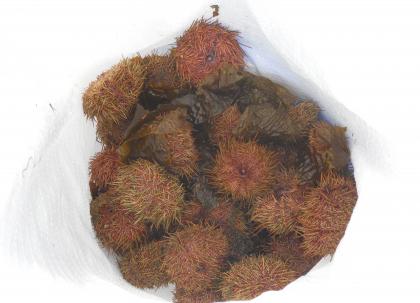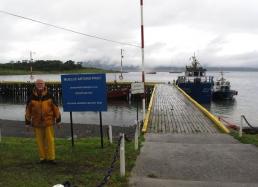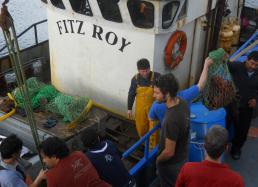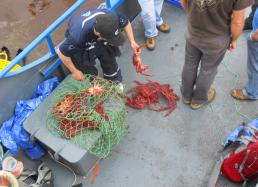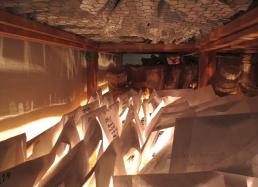Blog #5: Fruits of Land & Sea
We’ve had a busy last few days. Bill woke us very early this morning with the instruction that we must hand over our passports because we’d arrived in Puerto Williams.
The collecting has been good so far. One site in particular must have been a landslide 50-100 years ago because it now consists of huge boulders and giant fallen trees, all completely covered by thick bryophyte communities. It made me think of research by Nalini Nadkarni, who found that in tropical rainforests, it takes upwards of 30 years for these plants to become established.
In a cooler climate like Cape Horn, I can’t imagine how long it would take for bryophytes and ferns to become so well established; I'd guess fifty years at a minimum. And at our site, I saw several different liverwort species with sporophytes (spore-bearing structures)—more in one place than I've ever seen before.
Perhaps it's because it has been a true summer, warmer than last year by far. Yesterday, it must have been at least 60° F, and scorching hot in the open bog where I was working. The warmer weather is actually quite uncomfortable in such thick, rubber raingear. We’d be much more comfortable around 40-50° F.
Yesterday, we were in Bahia Navidad and came across other fishermen, from whom we bought centolla (king crab) and a huge sack of erizos (sea urchins)—see Photos #1-4 below. After much urging to try “the most exquisite delicacy” of the Chilean ocean, I sampled the erizos, but I must say, I wasn’t won over. The texture was quite nice, but it had an aftertaste that I found unpalatable. Worse was the smell on everyone's breath. Although I ate only two gonads, and brushed my teeth very well afterwards, I awoke this morning with the unpleasant aftertaste still in my mouth.
Aside from our seafood supper, Blanka and I have been working very hard on our liverwort collections. It’s a constant struggle not only to collect good specimens, but also to make sure that they all dry well. If the specimens aren't dried quickly, they’ll mold. (To see our shipboard plant dryer, check out Photo #5 below and my "Video Journal #7: Drying Specimens."
With such good, warm weather, our collections are drying rapidly, and we’ve been able to keep up with the material that we've brought in every day. Now that we’re in Puerto Williams, we’ll be able to take all our collections from the boat to the University of Magallanes, where we’ll spread them out so that they can continue to dry. This will help us make room in the boat for our collections from the second half of our trip.
So far, we’ve been able to capture microscope images of more than 100 different liverwort vouchers, and we’re slowly but surely making progress on my list of priority species. I’m looking forward to the time in Puerto Williams, where we can have our laundry done, work with the microscope on land (which is less nauseating than on the boat), and access some alpine sites easily (by trail) to collect some of the high-altitude species we’re still looking for.
More soon,
Laura

